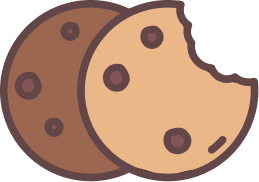#TakeCharge with #Aimshala
How make a career in Textile Pattern Designer
A career as a Textile Pattern Designer involves creating patterns and designs for fabrics and textiles used in fashion, home furnishings, and other industries. To pursue this career, individuals typically need a strong educational background in textile design, fashion design, or a related field. A bachelor's degree is essential, often followed by specialized training or internships to gain practical experience. Building a portfolio that showcases design skills is crucial for entering the industry. Networking with industry professionals and staying updated on trends and technologies in textile design are also important for career advancement.
Career in Textile Pattern Designer
What are the roles and responsibilities in Textile Pattern Designer?
- Creating Patterns : Textile Pattern Designers develop original patterns for fabrics, considering color, texture, and style to meet client specifications.
- Collaborating with Teams : They work closely with fashion designers, manufacturers, and clients to ensure that patterns align with overall design concepts.
- Using Design Software : Textile Pattern Designers utilize design software to create, modify, and present patterns efficiently.
- Researching Trends : They stay updated on industry trends and consumer preferences to create relevant and appealing designs.
- Quality Control : Textile Pattern Designers may also be involved in quality control, ensuring that patterns are accurately produced in the final textile product.
What education is required to study Textile Pattern Designer
Check out the dates of the total number of candidates who have appeared in the CUET 2022 exam from the below table.
Stream |
Graduation |
After Graduation |
After Post Graduation |
|
|
Path 1 |
Completion of high school with a focus on art and design subjects. |
Bachelor of Fine Arts in Textile Design or Fashion Design. |
Master's degree in Textile Design or a related specialization. |
Certifications in textile technology or design software. |
|
Path 2 |
Completion of high school with an emphasis on vocational training in textiles. |
Associate degree in Textile Design or Fashion Merchandising. |
Bachelor's degree in a specialized area of textile design. |
Internships or apprenticeships in textile design firms. |

Feeling unsure about
your future?
Let's find the perfect career path for you!
with AI-powered career
guidance

What are the key skills required for Textile Pattern Designer
- Creativity - Essential for developing unique and innovative patterns that stand out in the market.
- Technical Skills - Proficiency in design software and understanding of textile production processes are crucial.
- Attention to Detail - Meticulous attention to detail is important for ensuring patterns are accurate and visually appealing.
- Communication Skills - Effective communication is necessary for collaborating with clients and team members.
- Time Management Skills - Ability to manage multiple projects and meet deadlines is key to success in this fast-paced industry.
What are the career opportunities in Textile Pattern Designer?
- Fashion Designer - Fashion Designers create clothing and accessories, often incorporating textile patterns into their designs.
- Textile Technologist - Textile Technologists focus on the technical aspects of fabric production, ensuring quality and performance.
- Surface Designer - Surface Designers create patterns and graphics for various surfaces, including textiles, ceramics, and wallpapers.
- Textile Buyer - Textile Buyers select and purchase fabrics for fashion and home goods companies, requiring a keen eye for trends.
- Production Manager - Production Managers oversee the manufacturing process of textiles, ensuring efficiency and quality control.
What is the salary and demand for Textile Pattern Designer?
- Salary Overview - The typical salary for Textile Pattern Designers ranges from $40,000 for entry-level positions to over $80,000 for experienced professionals, influenced by education and location.
- Regional Salary Variations - Salaries can vary significantly by region; designers in fashion hubs or metropolitan areas may earn higher wages than those in rural settings.
- Current Job Market Demand - The demand for Textile Pattern Designers is growing due to the increasing focus on fashion sustainability and innovation in textile production.
- Future Demand Projections - Future demand for Textile Pattern Designers is expected to rise as the fashion industry continues to evolve and embrace new technologies.
Leading companies for careers in Textile Pattern Designer

H&M

Zara

Nike

Adidas

Levi Strauss & Co.

PVH Corp.

Under Armour

Lululemon
What are the best colleges for Textile Pattern Designer in India?
Undergraduate
College |
Location |
Website |
|
National Institute of Fashion Technology (NIFT) |
Delhi |
https://www.nift.ac.in |
|
Pearl Academy |
Delhi |
https://www.pearlacademy.com |
|
Srishti Manipal Institute of Art, Design and Technology |
Bengaluru |
https://www.srishti.ac.in |
|
MIT Institute of Design |
Pune |
https://www.mitid.edu.in |
|
L. S. Raheja School of Art |
Mumbai |
https://www.lsrahejaschoolofart.com |
Postgraduate
College |
Location |
Website |
|
National Institute of Fashion Technology (NIFT) |
Delhi |
https://www.nift.ac.in |
|
Pearl Academy |
Delhi |
https://www.pearlacademy.com |
|
Indian Institute of Technology (IIT) - Delhi |
Delhi |
https://www.iitd.ac.in |
|
National Institute of Design (NID) |
Ahmedabad |
https://www.nid.edu |
|
Srishti Manipal Institute of Art, Design and Technology |
Bengaluru |
https://www.srishti.ac.in |
What are the best colleges for Textile Pattern Designer in Abroad?
College |
Location |
Website |
|
Fashion Institute of Technology (SUNY) |
New York, USA |
https://www.fitnyc.edu |
|
Central Saint Martins |
London, UK |
https://www.arts.ac.uk/colleges/central-saint-martins |
|
Rhode Island School of Design (RISD) |
Providence, USA |
https://www.risd.edu |
|
Parsons School of Design |
New York, USA |
https://www.newschool.edu/parsons |
|
Royal College of Art |
London, UK |
https://www.rca.ac.uk |
What are the top entrance exams in India for pursuing a career in Textile Pattern Designer
College |
Tentative Date |
UG/PG |
Important Elements |
Website |
|
National Institute of Fashion Technology (NIFT) |
January |
UG/PG |
General Knowledge, Creative Ability, and Design Aptitude. |
https://www.nift.ac.in |
|
Pearl Academy |
February |
UG/PG |
Creative Skills, General Knowledge, and English. |
https://www.pearlacademy.com |
|
Srishti Manipal Institute of Art, Design and Technology |
April |
UG/PG |
Design Aptitude, General Knowledge, and English. |
https://www.srishti.ac.in |
|
National Institute of Design (NID) |
December |
UG/PG |
Design Aptitude Test and Studio Test. |
https://www.nid.edu |
|
Indian Institute of Technology (IIT) - Delhi |
May |
Postgraduate |
Design Aptitude Test and Interview. |
https://www.iitd.ac.in |
Pros & Cons of a Career in Textile Pattern Designer
Pros
- Textile Pattern Designers have the opportunity to express their creativity and artistic vision through their work.
- The field offers diverse career paths, including opportunities in fashion, home décor, and industrial textiles.
- With advancements in technology, designers can explore innovative techniques and materials.
- The demand for sustainable and eco-friendly textiles is growing, providing opportunities for designers focused on sustainability.
Cons
- The industry can be highly competitive, making it challenging to establish a successful career.
- Deadlines can be tight, leading to high-pressure situations and long working hours.
- Some positions may require extensive travel to attend trade shows or collaborate with manufacturers.
- Job security can be uncertain in the fashion industry due to changing trends and market demands.
Did you find this information helpful?


Report
0 out of 0 found this helpful


